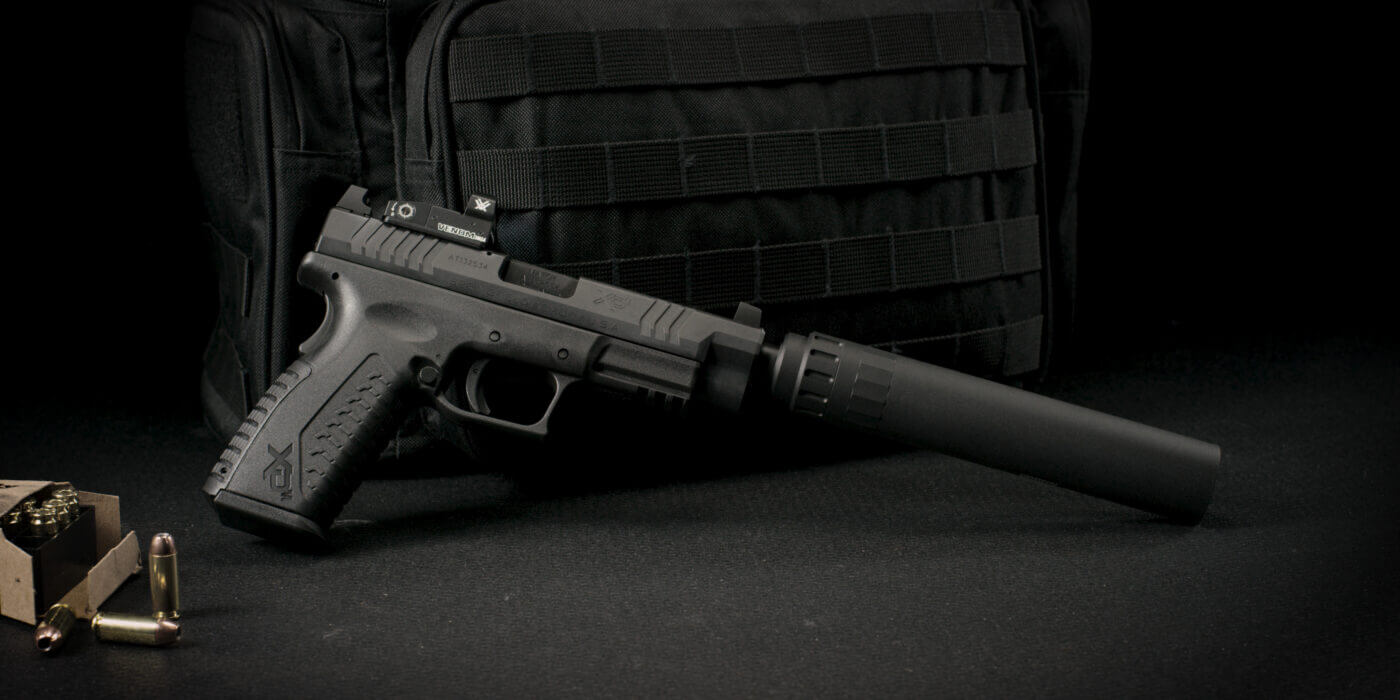Things to Know about Mechanism Found in Gun Suppressor – In many movies, especially action movies, gun and various firearms can be seen easily. When the actor use gun, they mostly use additional part added on or embedded on the gun. The extra part is added to reduce the noise generated by the gun. It is called as suppressor or silencer. This is interesting technology and there are some kinds of interesting information about the gun suppressor.
Gun suppressors, commonly known as silencers, have long been the subject of intrigue and misconceptions. As what is mentioned, people will often find the use of suppressor, especially in movie related to spies or espionage. The suppressors play a crucial role in the world of firearms as these can hide the sound and that is why it is popular in espionage stories and movies where things should be held in secrets. Regardless its great functions and complicated mechanism, these devices serve practical purposes, including reducing noise levels. Even, the suppressor can help mitigating the recoil of the gun. As for its mechanism, it cannot be explained shortly, and it can become interesting information.
A gun suppressor is a cylindrical device. It is attached to the muzzle of a firearm. Its main function is to reduce the sound intensity produced when a bullet is fired, so it can diminish the noise signature commonly associated with firearms. In fact, suppressors do not entirely eliminate the sound of gunfire. Instead, they significantly decrease the noise level, making it more manageable and less likely to cause hearing damage. Thus, it is only to minimalize the sound generated from the gun.

The mechanics of a gun suppressor involve a series of chambers, baffles, and expansion chambers. When a bullet is fired, the high-pressure gases generated by the combustion of gunpowder propel the bullet forward. Simultaneously, these gases exit the barrel, creating a loud muzzle blast. The suppressor works by capturing and redirecting these gases to reduce the noise produced.
The first chamber of the suppressor, known as the expansion chamber, serves as an initial reservoir for the escaping gases. This chamber allows the gases to expand and cool down, which helps in reducing the noise produced. From the expansion chamber, the gases are directed into a series of baffles or expansion chambers, designed to further slow down the gases and disrupt their flow. These baffles are typically constructed with intricate shapes, allowing for the efficient expansion and redirection of the gases.
As the gases pass through the baffles, their pressure decreases, and their velocity decreases as well. This process helps to minimize the noise generated, as the rapid release of high-pressure gases is transformed into a more controlled and subdued release. The baffles also serve to cool down the gases further, aiding in the reduction of heat and preventing excessive wear on the suppressor.
In addition to reducing noise, gun suppressors also have the advantage of mitigating recoil. When a bullet is fired, the gases exiting the barrel create a recoil force that pushes the firearm backward. The expansion chambers and baffles of the suppressor act as additional chambers, providing extra volume to capture and redirect these gases. By doing so, suppressors can effectively reduce recoil by redirecting the gases in a way that counteracts the backward force, resulting in a smoother shooting experience and improved firearm control.
Apart from their noise reduction and recoil mitigation capabilities, gun suppressors also offer other benefits. By reducing the sound signature of firearms, suppressors contribute to improved safety at shooting ranges and hunting grounds. The diminished noise levels not only protect the shooter’s hearing but also minimize noise pollution in the surrounding environment, reducing the disturbance to wildlife and neighboring communities.
Furthermore, the use of suppressors can enhance the overall shooting experience by reducing flinching and anticipation. When firing a firearm, the loud noise and recoil can cause involuntary reactions, such as flinching or jerking the trigger, which can negatively impact accuracy. By dampening the noise and recoil, suppressors help shooters maintain better focus and control, leading to more accurate and precise shots.
Despite their numerous benefits, the use of gun suppressors is subject to regulations and legal restrictions in many jurisdictions. The laws governing suppressor ownership and use vary from country to country and even within different states or regions. It is crucial for individuals interested in owning a suppressor to familiarize themselves with the local laws and obtain the necessary permits and licenses. In some places, suppressors are strictly regulated and may require background checks, registration, or even outright bans.
In conclusion, gun suppressors are devices designed to reduce the noise signature and mitigate recoil associated with firearms. Through a series of chambers and baffles, suppressors capture and redirect high-pressure gases, reducing noise levels and enhancing shooting comfort and control. These devices provide practical benefits such as hearing protection, reduced noise pollution, and improved shooting accuracy. However, it is essential to abide by the legal regulations governing suppressor ownership and use in your jurisdiction. By understanding the genuine mechanics and responsible use of gun suppressors, firearms enthusiasts can make informed decisions about their use and appreciate their practical applications

